![]()
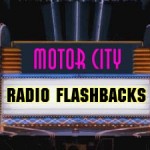 From the MCRFB NEWS archive: 1966
From the MCRFB NEWS archive: 1966
Detroit Record Distributors Play Down Chart Value in Sound-Alike Market
DETROIT — While local record merchandisers claim that area radio “Top 40 Charts” are highly inaccurate, they say they are able to live with the situation because no one in the Motor City market uses radio charts as a buying guide.
This lack of direct chart influence on record sales, according to dealers, is due to the relatively high number of competing “Big Beat” radio stations in the area — all offering slightly different formats and none having a clearly dominant influence in effect in the Detroit pop market.
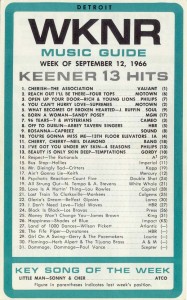
Sam Press, co-owner of Ross Music Shops in Detroit, said that “There are actually three influential rock stations — WKNR and WXYZ here (Detroit) and one, CKLW, in Windsor, Canada, competing for the kids’ attention, plus two very strong R&B stations, WCHB and WJLB (Detroit). You have to remember that because of Motown, R&B (or Soul music) is a stronger product here than it might be in other markets. So what you have is kids constantly switching dials between all these stations and not being dominate by any of them. A (WKNR) ‘Keener’ chart might have some of the most popular songs in the area on it but it will be invariably late in listing a big English hit which the kids have been hearing on CKLW of Windsor, and will likewise be late in list a hot R&B number that has been exposed by one of the other stations.”
“What this means,” he said, “is that teen-agers choose the best of several stations. For this reason we don’t have to buy according to any one station’s charts. The independent dealers in this town wait until they start getting requests before they will order anything — except something by a very hot artist.”
Asked if his customers would not seek out a competitor who already had the hits in stock, Press said: “The racks are even slower in getting current singles out — we can move faster than our competition.”
NOT USED AS GUIDE
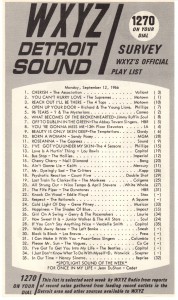
Lou Salesin, a 35-year veteran of the business who owns Munford Music Shop, said he also does not use “radio charts as buying guides. I must ignore WKNR and the other lists; they are inaccurate for a number of reasons. Some of these inaccuracies could be eliminated — and I would like to see that happen, just for the principle of the thing.”
Sol Margolis, owner of the Ross Music Stores, told Billboard: “I only order what I get calls for, plus a minimum of new releases by established artists. To my knowledge, no Detroit dealers uses radio charts as any kind of a buying guide. We know better than to trust what these sheets say.”
Another dealer, who did not wish to be identified, said that “you simply cannot believe what the radio charts list. The problem is there are too many pop records being released. I think the manufacturers are working on some sort of percentage planning. They just keep churning the records out, hoping that 4 per cent or more will make money for them.”
“As far as local charts are concerned,” he added, “we often see a record that hasn’t been shipped already on the sheet. Other times, we see stations keeping numbers on the charts long after they have stopped selling. They do this, apparently because they got on a record too late, and then refuse to admit that their influence hasn’t been able to keep it a hot seller. There are many complicating factors, but the end result is inaccurate charts. All the dealers know this, and they depend on requests and their own experience in the business to tell the how to buy.”
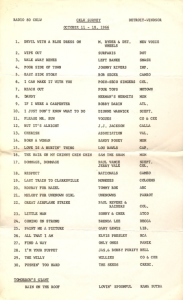
Chet Kajeski, of Martin and Snyder, one-stop in Detroit, told Billboard: I find frequent discrepancies on the radio charts. As far as I am concerned, they hurt jukebox operators in the area. By failing to list, and expose on the air, what is a legitimate ‘adult’ hit, they can cut down play on the boxes. This happens when a record sells very well in the area, deserves to be listed on the charts, but doesn’t get listed because such a record does not get the additional push of air play, its life on the jukebox is sometime shortened.
“I don’t believe,” Kajeski added, “that many record dealers are affected by the charts in the Detroit area. By being inaccurate, these charts defeat their own purpose.” END
___
(Information and news source: Billboard; September 3, 1966)
![]()
 From the MCRFB news archive: 1971
From the MCRFB news archive: 1971
CKLW Says Rhythm Is Not Included
TORONTO — A loophole in the Canadian content legislation has arisen, centered on the Windsor radio station, CKLW, which is located on the Canadian side of the Detroit River and is a top rated radio station in Detroit, Toledo and Cleveland.
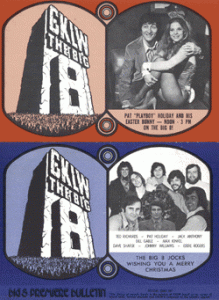
The station has been playing several U.S. soul records recorded by U.S. producers which have been submitted as Canadian content material although the rhythm tracks were laid down at Toronto studios. Overdubbing and mixing were done in the United States.
In the Canadian content legislation, launched in January by the CRTC, the country’s broadcast governing body, a station is required to broadcast 30 per cent of all musical composition in at least one of four categories — instrumentation and lyrics were principally performed by a Canadian, music composed by a Canadian, lyric written by a Canadian and the live performance was wholly recorded in Canada.
The last category is the section that raises the controversy. CKLW vice president of programming, Alden Diehl, said that, in his opinion, the R&B disks programmed were legitimate Canadian product.
Navin Grant, chairman of the Maple Leaf System, which picks product for radio play, had this to say, “I personally would have a lot of questions about whether such performances are Canadian or not. We certainly wouldn’t review them on the MLS although they have not been submitted.
“We could do with some more definition on some of these points from the CRTC.”
CKLW programmed the Janis Joplin single, “Men And Bobby McGee,” as Canadian content because members of the back-up group, Full Tilt Boogie Band, were born in Canada.
However, the CRTC reportedly does not consider two members of a back-up group as principal performers. END.
(Information and news source: Billboard; June 19, 1971).
![]()
 From the MCRFB news archive: 1984
From the MCRFB news archive: 1984
Windsor FM Outlet to Easy Listening, AM to Nostalgia; 45 Cut from Staff
DETROIT — While no official word had been released at press time, the rumblings across the river in Windsor, Ontario have changes — and plenty of them — coming from CKLW/CFXX.
Word is that 45 of the station’s 75 employees are no longer with the border outlets, which are set to be switching formats, including longtime music director Rosalie Tromley, who had served in that capacity since CKLW’s influential heyday in the ’60s.
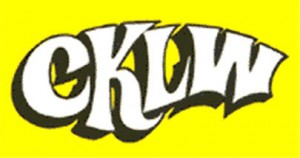 The moves come on the heels of two developments: CKLW/CFXX’s sale from Baton Rouge Broadcasting to CUC Ltd. (Billboard, September 22), and the subsequent announcement from the Canadian Radio-Television & Telecommunications Commission that it would be flexible in the handling of the stations in Windsor.
The moves come on the heels of two developments: CKLW/CFXX’s sale from Baton Rouge Broadcasting to CUC Ltd. (Billboard, September 22), and the subsequent announcement from the Canadian Radio-Television & Telecommunications Commission that it would be flexible in the handling of the stations in Windsor.
The CRTC regulations, involving such areas as format restrictions and Canadian content requirements, were long held responsible by many observers for CKLW’s faltering ratings. The CRTC’s rigid guidelines, including the banning of Top 40 on FM, were said to have led in part to Baton’s sale.
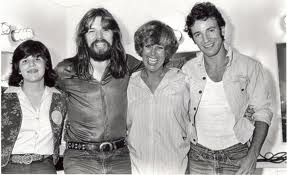
Prior to that transaction, Baton had planned to take nostalgia-formatted CFXX in a Top 40 direction as “The Foxx,” only to reassess those plans when assured the license would be in jeopardy.
With the lifting of the restrictions, it was assumed that plans for that switch would again be underway. But the surprising word amidst the flurry of firings had the FM nostalgia programming moving to to the AM operation (now transitioned from top 40 to AC), with CFXX-FM adopting a compatible easy-listening approach. END.
(Information and news source: Billboard; October 27, 1984).
![]()